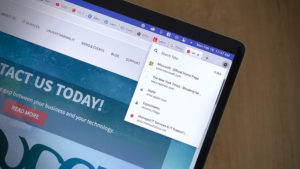Tech can be confusing. One of the best examples of that fact is USB, with its many, many cables, and its many, many names. USB-C is actually a great step toward simplifying the confounding legacy that USB 3 and its predecessors left behind. Let’s check out why.
The most common USB cable for new tech these days is USB-C. It’s a round plug with a single line through the middle, and often has the same port on either side of the cable. That said, it can also be on the other end of ports such as Apple’s Lightning cable.
One major advantage of USB-C is speed. USB-C uses either USB 3.1 or USB 3.2 technology — 3.1 can reach speeds up to 10 gigabits per second, while 3.2 can reach both 10 and 20 gigabits per second. If that doesn’t mean anything to you, just know that’s up to four times as fast as USB 3.0.
Arguably the main benefit to USB-C, however, is versatility and universality. Let’s start with this — have you ever had to flip your USB over, again and again, to try to find the right position? USB-C doesn’t have that problem, because it’s identical top or bottom. That means there’s no flipping — you just plug in once and you’re good to go.
USB-C being the universal port means that many of your devices will share the same port. That’s huge for convenience and e-waste — no need to worry about carrying around five different wires if your laptop, phone, camera, and gaming device all share the same plug!
USB 3, on the other hand, is the old world of USB. These plugs range in appearance — you’ll find the traditional, large USB-A plug on one side, with either a USB-B, USB-micro B, USB-micro A, or another plug altogether on the other. Up until this year, for example, Apple’s Lightning cable had a USB-A on the other end.
USB 3’s wide variety of plugs means it’s tricky to use one cable for all of your needs. Devices use different ports, which makes it hard to have one cable with both USB plugs necessary to get the job done. USB-C solves that issue, since all USB-C ports are the same.
That’s why we’re excited to see more and more devices adopt USB-C. Your MacBook, Nintendo Switch, Android phone, iPad, game controllers, and more all use this convenient and powerful port.
Cover photo by Lucian Alexe on Unsplash




